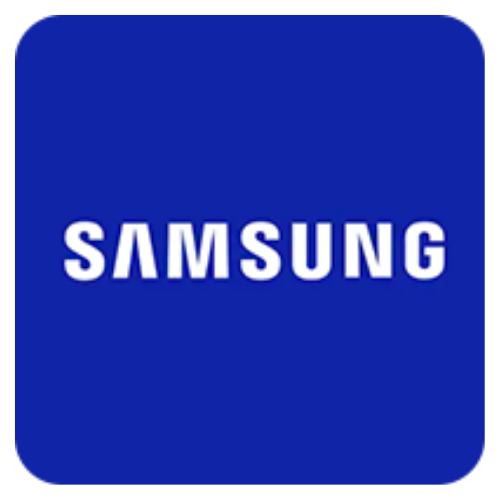Laura Beth: Welcome to the Haulin’ Notes Podcast by Canal Insurance Company! I’m your host, Laura Beth Medley, VP, Chief Human Resources & Corporate Communications Officer at Canal. This month I’m excited to be joined by Spencer Mitchell, Chief Executive Officer of TruckerCloud. By providing a one-stop integration to ELDs and camera providers for commercial auto insurers, TruckerCloud is enabling rapid growth for the next generation of transportation technology while enabling carrier control over telematics data-sharing. Their telematics data platform supports over 30 ELD and camera providers, so insurance businesses built on TruckerCloud have access to everything they need to grow. I hope you enjoy our conversation – now let’s get rollin’! Hey Spencer, it’s great to see you again. I’m excited to touch base with you and do a little bit of a deep dive into all things Trucker Cloud. So thanks for joining us.
Spencer: Yeah, it’s great to be with you, Laura Beth. I’ve admired the podcast for a while now, seeing them come out, once a month, every couple months. I’m really happy to be here. Thanks for having me on.
Laura Beth: Yeah, awesome. Well, we’re gonna start out with a big broad question, and I’d love for you just to tell our listeners a little bit of an overview of TruckerCloud with some history—back from the beginning details.
Spencer: Back from the beginning. Yeah, so what TruckerCloud does today—I’ll start there and I’ll work backwards. We work primarily with insurance companies and motor carriers and sort of sit in between those two parties so that motor carriers can share data with their insurance companies for a variety of purposes. That may be for discounts or subsidies or to be a part of a specific insurance program. And the way that we do that is by integrating with telematic service providers both cameras and ELDs. So today, where we sit today, we have almost 40 now ELD and camera integrations that our insurance companies can utilize to— and motor carriers can utilize—to share that data and share that information between the two parties for these programs. Going back to the history of TruckerCloud. We’ve been doing telematics integrations for about five or six years now. And doing all those integrations, having those partnerships is it’s really the lion share of the work there. So we started doing those five or six years ago, and the initial use cases for ELDs were really for tracking hours of service and having logs and hours of service, having those digitally and so when the trucking industry started to identify the alternative use cases for those or what data can be utilized from the ELD and to carry information across the industry the first couple of use cases were really around tracking, right? Project 44, Macro Point, Trucker Tools a lot of these companies that your motor carriers will be very familiar with because Brokers and shippers have been using those solutions for a while now to attract shipments. And so some of the early use cases in Trucker Cloud were we were tracking shipments. We were actually providing ELD Integrations to TMSs transportation management systems so that they could now sell to the entire motor carrier industry and that motor carrier can buy a TMS solution and off the shelf there’s an ELD integration or maybe for factoring or for fuel cards or for payments. There’s all kinds of use cases for okay, I want to as a motor carrier to be able to view my information or share information into another system and so Trucker Cloud became that through one stop shop for ELD Integrations for a lot of different softwares and companies in the transportation space and then over the last couple of years we’ve seen the introduction of many new insurance programs that utilize telematics you can see that I won’t name any names but you can sort of look down the list of the who’s who in terms of who has Integrations or who has Partnerships with some of the top PSPs ELDs like Motive and Samsara and others. And so that’s really where our businesses shifted, is into serving that connection between insurance companies and motor carriers. There’s a common value proposition there as well. Motor carriers want discounts, insurance companies would like to give those discounts and receive more information in return so that’s really where we’ve gotten to and taken sort of a stronghold over the last couple of years.
Laura Beth: And I know recently you guys have really been adding so many more ELD providers. What’s the growth rate that you’re seeing right now with folks coming on board or entering into the ELD Market?
Spencer: Yeah, there are hundreds of ELDs at this point in the market if you look at the FMCSA registered list of ELDs. Interestingly though, I think we’re seeing even more growth. And at this point most motor carriers have ELDs right? If you’re going to start an MC operation that’s going to cross state lines and operates within a certain radius, you’re going to have an ELD. What we’re seeing more and more of is an explosion of motor carriers adopting cameras because there are many benefits to those. And the camera data is actually more powerful than the ELD data oftentimes because there’s a lot of data out there that says cameras in more cases than not actually protect and exonerate motor carriers, individual drivers. And the industry I think has really caught on to that. There’s a lot of big players out there that have sort of been pushing that message. Adtree has pushed that message and so I think people are starting to understand the power behind that so as much as there is an explosion of the number of ELDs or sort of in market, we’re seeing an explosion in the usage of cameras by motor carriers.
Laura Beth: And do you guys have integrations or would you have a motor carrier that may be integrating through TruckerCloud through separate providers maybe a certain camera provider and then an ELD provider?
Spencer: Yes, Very common, maybe separate ELD providers because there’s a lease on the fleet. So a lot of your larger fleets will lease on another fleet that has 10 trucks. Maybe they have a different ELD provider. that data can be combined into one system, one platform, or ELDs and cameras that maybe aren’t on the same platform that need to speak with one another they do that as well. So we do still have conversations with large trucking companies who maybe have made an acquisition or have a bunch of leesons or owner operators where they want to pull out that information into one for safety and compliance reasons. and we do have those conversations quite often as well.
Laura Beth: What are you seeing, Spencer, that what decisions are carriers making or insurance companies making now through the use of ELD and Camera data, or have you seen a shift? What are we getting out of the data that you’re helping to get into different folks’ hands?
Spencer: Yeah, there’s a variety of use cases. There’s a few that benefit everybody and one of those is the understanding of or just the communication of information around things like mileage. There are a good number of programs out there that operate on a month-to-month basis in terms of hey what’s the mileage we’re going to bill for that? It’s somewhat of an administrative burden, right for the motor carrier every month to send that to the agent, to the broker, up to the insurance company, reconcile that with the insurance at the end of the year, all of that sort of passing of information and gathering information is an administrative burden not just on the insurance company but very much so on the motor carrier as well, especially if you’re trying to—need to slice data in different ways because if you’re unplugging and plugging devices in it starts to create some issues in terms of that data that flows. So that’s a big benefit to both motor carriers and insurance companies. Another is with the camera data, there’s a massive benefit in the video and claim information quickly going through Motor Carrier to the insurance company. With the number of nuclear verdicts, nuclear lawsuits out there, again, this speaks to the value of the cameras and how much it often exonerates the motor carrier, but we’re constantly monitoring to see if there was a crash event that has occurred, and if that crash event has occurred, we’re able to quickly get information from the motor carrier to the insurance company so the claims team can start operating on that as opposed to waiting two months to get a note from a trial lawyer from a plaintiff’s attorney that says oh hey, I have a client who got hit and all sudden now they have a back injury or soft tissue injury or something of that sort. So sharing that information quickly to the insurance company is a big benefit as well. Other information we’re able to pull from TSPs, we’re able to give some information back to fleets in terms of hey, you are driving in this area or in the zip codes or in these regions or zones, whatever you want to call them, and insurance companies may be viewing those zones as riskier zones and therefore that price of insurance goes higher to the motor carrier. Well, if we can give the motor carrier that sort of visibility into hey, this is what either you’re telling the insurance company or that they’re hearing is that hey, you’re driving a lot through downtown Atlanta. I live downtown Atlanta, one of the worst zip codes to drive through, one of the worst zip codes from a rating perspective. If—I don’t know how often it is communicated, but it is becoming more common than an insurance company can communicate that back to the motor carrier and say hey, I see you’re driving in this area. Maybe if you took 285 around the city of Atlanta those rates would go down. So that’s the sort of information now, we’re able to allow insurance companies to communicate back to motor carriers so that it will look—our goal is to really safety on the roads and lowered insurance premiums and insurance premiums have been doing what they’ve been doing in the trucking industry now for a few years as much as we can be a force that helps push that back down, it—that benefits everybody.
Laura Beth: Sure does. I know that our claims department here at Canal, we always like to know—we want to get all the information that we can to defend our driver and properly investigate claims, but it’s also—it’s always good to know everything as early as possible regarding your claim. And so I think what you’re saying about the data and getting that camera data footage as soon as possible in the event of an accident is a game changer when you’re trying to get best possible outcomes for everybody involved. Early on when I think ELDs we’re starting to be used or we’re mandated, I think there was some resistance about people being able to see what’s going on or watching you in your truck. Have you seen a shift in that mindset across motor carriers? Do you think that people are opening up to sharing data in a different way?
Spencer: I think so. We certainly were not at the forefront of that, meaning if you go back and look at the number of many, trucking Facebook groups and those sorts of things. Just trying to keep a pulse on the sentiments in the industry, and if you look back a few years, there was a resistance initially to I will never use X tracking software. I will never let brokers or shippers be able to see where my trucks are—so on and so forth. And now motor carriers talk more about what their favorite tracking application is. Oh I really like this one because it allows me to more easily assign my trucks and give visibility to the shippers and to brokers. So I think there was some first movers in the industry that made it much more of a norm to share data. Now, sharing data to insurance companies is a newer value proposition and one that actually has a common value prop versus I think motor carriers initially felt like if they were being tracked for visibility purposes, they weren’t really getting anything out of that. It was just I’m gonna give my location data to my shipper or my broker and What do they give me in return? They’re just not calling me as much? I don’t know. How much is the benefit? but these new insurance programs that offer the telematics as a component do give those discounts back to motor carriers. So there is that common value proposition. and so I think we’ve seen the major growth in this area and the other part of
this is this is entirely all programs are opt in, right? This has been–I think when initially motor carriers ask your data with shippers or brokers, it was more of a mandate and what insurance companies are giving motor carriers the option to do is to opt in and say which data would you like to share? Here’s the discount that we can provide, here’s a substitute we can provide so it’s again that mutual value proposition but also the option to do so, so there’s not so much resistance if you just let the people who want to do it, do it.
Laura Beth: Right. And I think a similar experience that we’ve seen at Canal with our utilization-based products—where I think the benefit for a driver who may be looking to take some time off, not have every truck running a hundred percent of the time within their fleet. It’s a really kind of a good way to manage a business. I think we had a lot of stories from the early days of TestDrive where we would talk to an insured and say yeah, I felt like when I took a week off to go to the beach with my family, I wasn’t having to pay for insurance on a truck that wasn’t running. I think you’re right, that power of getting to pick what works for you and that opt-in has been a helpful way to get people more excited about this type of opportunity.
Spencer: Totally. I mean think about people who run during Hurricane Season, right, they want to do FEMA work they want to do specific type of work, but they don’t want to go and have to get insurance at the time that they want to do that one because you don’t know when that disaster is going to occur. So having the option to let a truck sit and have sort of minimal Insurance costs and then activate it when you need it is a pretty powerful thing to be able to have as a motor carrier in your toolkit to manage operations and manage costs.
Laura Beth: Absolutely. You talked about Spencer. You are a Facebook follower of a lot of different trucking groups. I, during the pandemic, was introduced to trucker tiktok and it’s been really insightful to kind of learn and get a deeper understanding of some of the aspects of the industry. From your perspective, what trends do you see maybe coming out of the next year within our industry or maybe even a little bit farther down the line?
Spencer: That’s a good question. You know, a couple of the trends have already spoken to the idea of having sort of flexible Insurance programs, the idea that more and more motor carriers are adopting cameras. Part of that is the spread of information within the trucking industry. I think supply chain and Logistics had a lot of attention turned towards it in covid and post-covered era. There was a ton of trucking companies that started anew at that time because rates were high and all the sudden a bunch of investment, a bunch of attention was started to turn toward this industry, and I think that came with an explosion of options for motor carriers to do different things to operate their business, right, to get this low cost but High functionality TMS or to get this new ELD system or new camera system that does certain things. So it takes a little bit of time for technology to integrate itself into networks. Even the technology that started spin up a few years ago. I think the adoption technology will continue to play out over the next few years, and I don’t know. Maybe that’s kind of a boring answer to say the adoption of technologies is certainly a trend but you think about before ELDs even 2010 this was a fairly analog industry, right? But one of the other trends I see in terms of what organizations like Adtree are putting out there are rising costs associated with people, associated with insurance associated with other operations within the business, and I think trucking companies are looking at their costs in a very per-mile basis here. What are my favorite Facebook groups is the rate per mile Master’s group. And that is what is my rate per mile, right? And how do I wrap my costs and understand my costs? So the attention to how do I streamline my operations? How do I cut my costs? And how do I be efficient with that? I think that’s going to continue to take place. Especially hopefully the Freight Market will continue to pick up throughout the rest of the year. But there has been because the industry took the rates weren’t where they were and people were certainly looking at how can I cut costs and in that sort of belt tightening mindset that the industry took on I think will continue even as rates pick back up.
Laura Beth: Right. I am in different types of meetings throughout the day in my role here at Canal and have been fortunate enough to go to some conferences whether it be communication-focused or insurance industry-focused, and a buzzword that I hear—I don’t know if it’s a word or letters—are “AI”. I think probably you could find an article about AI in every newspaper, across the country. How do you see AI if any way kind of directly affecting the motor carrier industry? Is that something that you guys at TruckerCloud are thinking about or in trying to get your hands around as a utilization—as a tool?
Spencer: Yeah, yeah. For the industry in whole, my answer is I don’t know. I could imagine and I’ve seen some use cases where companies are trying to utilize AI to help match motor carriers to loads more efficiently to help optimize fuel efficiency. If you can get something sort of plugged into maybe that’s the ELD—something plugged into OBD2 port, which can actually support the reduction of fuel costs—those sorts of things. I don’t know which of those will get—Oh, there’s also finance and factoring solutions, so how can you streamline the factoring industry to maybe even cut margins even further? Although that’s a relatively slim industry in the first place.
Laura Beth: Right.
Spencer: But I think my answer as an overall industry is I don’t know. I think there’s probably a lot of opportunity in there for load optimization and load matching and those sorts of things. For us, we’re not, we think about AI just in terms of how do we develop faster and build software and build ELDS and Camera connections faster. If you’re a software company and you’re not thinking about how to use AI just to help you code better and more efficiently, then you’re sort of missing out on what it is able to help you with right now. I’m not a developer and I can actually use AI to help write a script if I need to get something out for a customer or… Something like that.
Laura Beth: Yeah, it’s a powerful tool that we definitely are spending some time talking about here at Canal about, and it’sinteresting when you’re in meetings with different groups of people across the organization to understand how it’s being used and how we’re thinking about the technology. We’re using it a lot of similar ways that you guys are too, but it’s interesting to see—be on the sidelines or maybe within it watching what’s going to come next. I think it’s pretty exciting. Spencer: It is, and I think I’m a little bit more analog in my thinking on AI than not necessarily you, but than a lot of people. I think maybe this is the trucking industry in me, but I’m like, I’ll believe it when I see it in terms of what are going to be the outputs. How am I as a fleet or as a large fleet or a small fleet going to actually utilize AI? I go, I’ll believe it when I see it because I think again it’s sort of the adoption curve of technology. I think it’ll just take time for those things to sort of surface and which use cases are really going to bubble to the top there.
Laura Beth: See what sticks and see what really makes people more efficient and better at running their operations. Well, Spencer, I want to thank you for your time today. This has been a great conversation about TruckerCloud and about technology and Trucking and look forward to maybe doing this again sometime soon and also continuing Canal’s partnership with TruckerCloud.
Spencer: Yeah, thank you Laura Beth. It was great to speak with you as always, and I hope to see you soon.
Laura Beth: Thank you for listening to our conversation with Spencer. I hope you enjoyed it as much as I did. Make sure to stay tuned for future episodes. Click the link in the show notes to subscribe for episode notifications. Thanks again for listening and we’ll see you next time on Haulin’ Notes.







